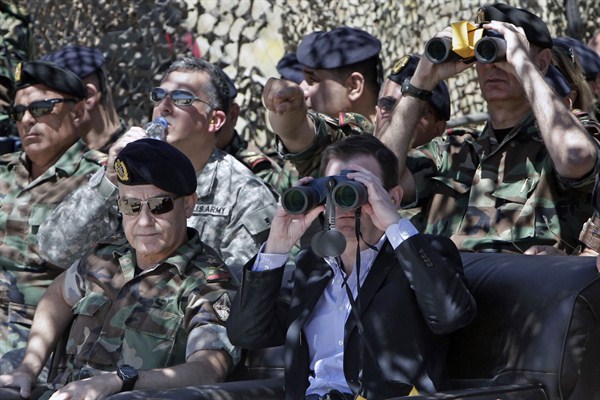Last week, the Lebanese army tested advanced TOW-II missiles, its newest weapon supplied by the United States. The live-fire demonstration took place at an army base in the Baalbek region, not far from the Syrian border. In late May, the U.S. agreed to provide more than 200 of the anti-tank guided missiles and dozens of launchers, at a cost of over $10 million, to help guard Lebanon’s border from Islamist militants and the threat of spillover from Syria’s civil war.
Lebanese soldiers have come under attack by militants near the Syrian border in the past two years, including from the Nusra Front, al-Qaida’s branch in Syria, and groups affiliated with self-declared Islamic State (IS). The worst attack came last summer, when fighters tied to Nusra and IS besieged the border town of Arsal and took over 20 Lebanese soldiers and policemen hostage. As Samya Kullab wrote this week in her WPR country report on Lebanon, that battle “marked the first time large-scale fighting from Syria spilled into Lebanon.” It forced the Lebanese army “to engage in a drawn-out, low-intensity war with the jihadi groups, who later retreated to the town’s outskirts.” But the militants have since killed four of the captured servicemen, and still hold the rest hostage.
At the live-fire demonstration, the U.S. ambassador to Lebanon, David Hale, said that Saudi Arabia and the U.S. had jointly financed the weapons purchase, as American military aid to Lebanon grows. According to the U.S. Embassy in Beirut, Washington has supplied the Lebanese Armed Forces with $82.5 million of weapons and ammunition since August 2014. In fact, Lebanon has quietly become the fifth-largest recipient in the world of American military assistance, having received over $1 billion in military aid in the last 8 years.

